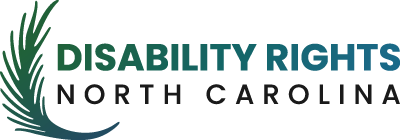Individuals who are Black and disabled have endured a long and distressing history of violence, mistreatment, and fatalities within the criminal legal system due to structural racism, ableism, and underinvestment in these communities. Research and policy often fail to address the intersecting racism and ableism that incarcerated Black disabled people experience. A disability justice lens is critical in our work towards Black liberation and a just society for all. In the words of Scholar Sami Schalk, “There is no Black liberation without Disability Justice and there is no Disability Justice without Black liberation.”
Black August originated during the 1970s at California’s San Quentin State Prison among incarcerated Black individuals. Its inception was a tribute to imprisoned Black revolutionaries, who lost their lives at the hands of California correctional officers while incarcerated. The historical tapestry of Black August is woven with narratives of unwavering resilience, activism, and the battle against oppression. August is a period for reflection, remembrance, and defiance – a time to amplify awareness surrounding political prisoners and prisoners of war in the United States.
Central to recognizing Black August is the pressing concern of solitary confinement within our nation’s criminal legal system. This essay underscores the profound intersection between Black August and the painful reality of solitary confinement. It aims to show how important it is to understand this connection and offers ideas for working together to end solitary confinement.
Black August — A Legacy of Resilience and Resistance: Black August is a time to honor the sacrifices of our ancestors and pay tribute to the struggles of Black activists, freedom fighters, and revolutionaries who have resisted the shackles of systemic racism. The month of August serves as a grim reminder of the collective strength and resilience that has persisted in the face of adversity. Reflecting on past struggles, we must recognize the parallels between Black communities’ historical oppression and the modern-day solitary confinement crisis.
The Injustice of Solitary Confinement: Solitary confinement is a practice that strips individuals of their humanity, subjecting them to prolonged isolation, sensory deprivation, and psychological torment. It is a grim reflection of the dehumanizing aspects of our criminal legal system, disproportionately impacting Black, Brown, and marginalized communities, including people with disabilities. Incarceration can exacerbate existing disabilities due to overcrowding and the lack of resources or appropriate mental and medical health needs. Further, research demonstrates that solitary confinement can be especially difficult for disabled individuals. In recognizing the intersection of Black August and solitary confinement, it is important to acknowledge and understand that the fight for justice extends beyond physical walls—it encompasses the dismantling of a system that perpetuates racism and systemic oppression. It is a celebration of liberty in all its forms. That celebration of liberty is also central to the disability justice movement. Liberty from external control of our bodies, from artificially constrained choices, from the expectation that we will sit quietly in dark corners and not make a fuss.
The Connection and Call to Action: At the heart of both Black August and the movement to end solitary confinement is the call for justice, equality, and human rights. To advance the cause, we must unite as a community of activists, advocates, and concerned citizens. Here are ways in which we can make a meaningful impact:
- Raise Awareness: Education is key. Organize workshops, panel discussions, and community events that shed light on the damaging effects of solitary confinement. Use Black August as an opportunity to connect the historical struggles of Black people in America with the modern fight against this practice.
- Advocate for Policy Change: Engage with policymakers to push for legislative and administrative reforms that limit or eliminate the use of solitary confinement. Support initiatives that promote alternatives to isolation, such as rehabilitation programs and mental health services.
- Support Organizations: Contribute your time, resources, or expertise to organizations dedicated to ending solitary confinement and advocating for prison reform. Collaborating with established groups can amplify your impact and effect positive change.
- Art and Expression: Embrace the power of art, music, and creative expression to raise awareness about solitary confinement. Use these mediums to communicate the stories and experiences of those affected, fostering empathy and understanding within the wider community.
- Community Mobilization: Mobilize your community through peaceful demonstrations, marches, and rallies. By coming together in unity, we send a strong message that solitary confinement is an injustice that cannot be ignored.
As we navigate the intersection of Black August and the movement to end solitary confinement, we find ourselves at a pivotal moment. By recognizing the shared legacies of resistance, resilience, and activism, we can harness the power of this connection to drive meaningful change. Let us honor the sacrifices of those who came before us by standing against the inhumane practice of solitary confinement and advancing the cause of a more just and equitable society for all. The time for action is now, and through collective effort, we can create a future where no one is subjected to the darkness of isolation and oppression.
